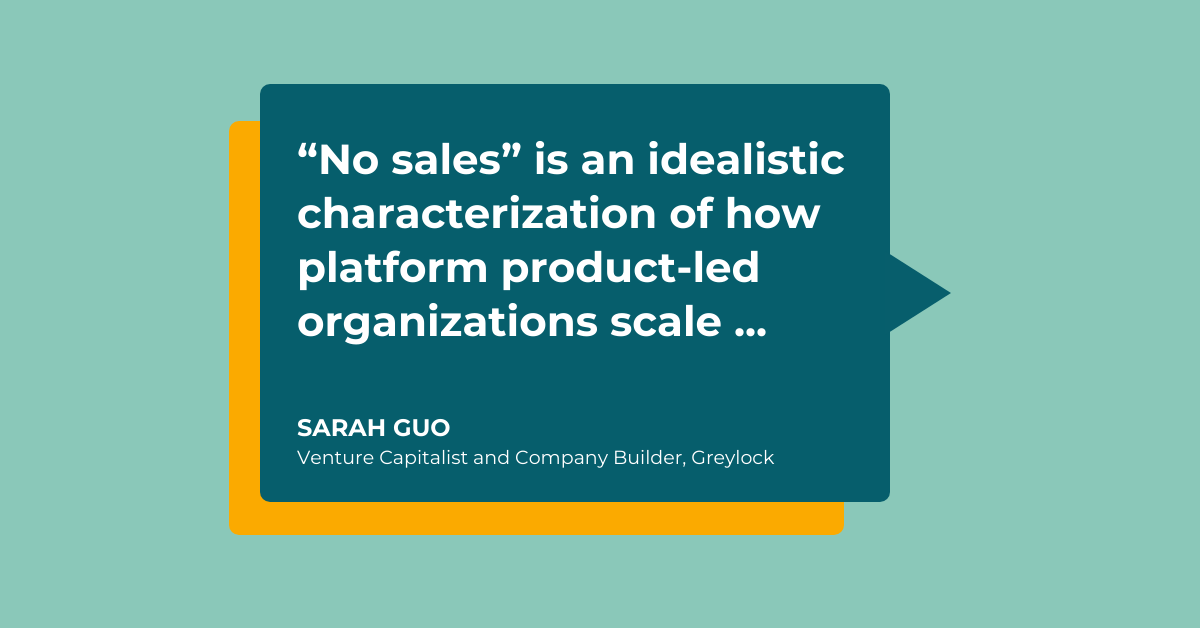Sarah Guo is a venture capitalist and company builder at Greylock. As someone who has seen founders have their product-led growth stunted by relying on organic end-user adoption, she wrote about the limits of PLG. Plus, she created a playbook for incorporating PLG into a more complete go-to-market strategy.
This is valuable stuff! So, we're sharing the big takeaways.
- Some product-led companies have declared that marketing and sales are dead. Product is the future of growth! But that may be short sighted, especially for B2B SaaS companies. Sarah says: "...'no sales' is an idealistic characterization of how platform product-led organizations scale, especially as they go upmarket. Without designing their company for buying, many self-serve SaaS companies hit a growth ceiling as they saturate their early adopter audience."
- Product-led growth has three limits: the products tend to solve collaborative pain points, but PLG doesn't naturally go beyond serving individuals; customer segments have different needs and buying processes, but PLG doesn't differentiate; and word-of-mouth adoption alone can't scale top-of-funnel revenue.
- The first step of Sarah's playbook is to do your recon. Identify all the stakeholders involved in choice, purchasing, and adoption . Understand your current best customers and how they use your product. Chart the customer journey per segment. Sarah says: "Start by understanding how different the problem you are solving is across individuals, teams at different levels of scale, leaders, and if applicable other use cases/departments."
- Second, treat land and expand like a user journey. Use all of the tactics you have, such as sales calls and marketing nurture emails. Think deeply about adoption for single people, teams, and across teams. Create product usage goals as a measure of success. Sarah says: "SaaS companies can be intentional and clever about the growth motion of the product, beyond the initial user acquisition. They can design for in-team and cross-team virality."
- Lastly, pay attention to where friction is going to happen because whole-company systems are hard. Consider functional scope and handoffs between teams, resource allocation and underlying cultural conflicts, and category choice and consistent positioning. Customer feedback should be a priority and expect pricing conflicts. Sarah says: "Many of these issues boil down to needing strong leadership clarity and cultural alignment around what customers to prioritize and serve."
The final, big takeaway is that developing a whole-company go-to-market system, while difficult, is worth doing. It results in valuable companies with efficient sales alongside large-scale value.
Read Sarah's complete article on LinkedIn >
We'd love to show you the Falkon PLG engine.


